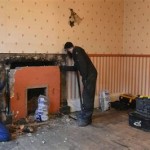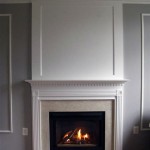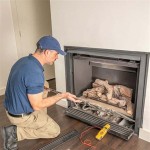San Diego Fireplace: A Comprehensive Guide
San Diego, a city renowned for its beautiful weather, still experiences periods where a fireplace becomes a welcoming addition to a home. While not a necessity year-round, a fireplace in San Diego offers warmth during cooler evenings, provides ambiance, and can even serve as a supplementary heating source. This article explores the various aspects of having a fireplace in San Diego, including types, considerations for installation, maintenance, and safety.
### Fireplace Types and Their Suitability for San Diego HomesChoosing the right fireplace necessitates consideration of several factors, including heating needs, aesthetic preferences, budget, and existing home infrastructure. Fireplaces are broadly categorized into wood-burning, gas, and electric models, each with unique advantages and disadvantages.
Wood-Burning Fireplaces: These traditional fireplaces offer the classic appeal of a crackling fire and a genuine wood-burning scent. However, they require a readily available source of firewood, which can be costly and necessitate storage space. Wood-burning fireplaces also demand meticulous maintenance, including chimney sweeping to prevent creosote buildup and potential fires. Furthermore, they tend to be less energy-efficient than gas or electric options, with a significant portion of heat escaping through the chimney. Due to increasing concerns about air quality, particularly in urban areas, wood-burning fireplaces may be subject to stricter regulations in San Diego. Potential homeowners should research local ordinances before installing or using a wood-burning fireplace.
Gas Fireplaces: Gas fireplaces offer a convenient and efficient alternative to wood-burning options. They operate on natural gas or propane, providing instant heat at the flick of a switch. Gas fireplaces come in various styles, including inserts that can be retrofitted into existing wood-burning fireplaces, freestanding units, and wall-mounted models. They produce significantly less pollution than wood-burning fireplaces and require less maintenance. While gas fireplaces require professional installation and a gas line connection, they offer a cost-effective and environmentally friendlier heating solution for many San Diego homes. The heat output is also more easily controlled compared to a wood-burning fireplace.
Electric Fireplaces: Electric fireplaces are the simplest and most versatile option. They require no venting, making them easy to install in virtually any room. Electric fireplaces operate by simulating the appearance of a fire using lights and simulated flames. They produce heat using electric resistance, offering a convenient and controllable source of supplemental warmth. Electric fireplaces are available in various styles, from traditional mantels to modern wall-mounted units. They are also the most energy-efficient option, as all the electricity consumed is converted into heat. While electric fireplaces may not provide the same ambiance as a wood-burning or gas fireplace, they offer a clean, safe, and affordable heating solution, particularly for smaller spaces or as a supplemental heating source.
### Installation Considerations for San Diego FireplacesProper installation is crucial for the safe and efficient operation of any fireplace. Regardless of the type, installation should be performed by qualified professionals who are licensed and insured. This ensures compliance with building codes and safety regulations. Factors to consider during installation include:
Building Codes and Permits: San Diego County and its municipalities have specific building codes governing fireplace installations. Obtaining the necessary permits is essential to ensure compliance with safety standards and avoid potential fines or legal issues. These codes address aspects such as chimney construction, venting requirements, and clearances from combustible materials. Ignoring these regulations can compromise safety and potentially lead to property damage or injury. A licensed contractor will be familiar with local codes and can navigate the permit process efficiently.
Venting Requirements: Wood-burning and gas fireplaces require proper venting to safely expel combustion byproducts, such as smoke and carbon monoxide. Wood-burning fireplaces require a chimney that is properly sized and constructed to ensure adequate draft. Gas fireplaces can be vented through a chimney or a direct-vent system, which draws air from outside and expels exhaust directly outdoors. Improper venting can lead to dangerous carbon monoxide buildup inside the home. Electric fireplaces, as they do not produce combustion byproducts, require no venting.
Clearances and Safety: Fireplaces generate significant heat and require adequate clearances from combustible materials, such as wood framing, furniture, and curtains. These clearances are specified in building codes and manufacturer instructions and must be strictly followed to prevent fires. Protective barriers, such as fireplace screens, should be used to prevent sparks from escaping and igniting nearby materials. Furthermore, carbon monoxide detectors should be installed in homes with wood-burning or gas fireplaces to provide early warning of dangerous gas leaks.
### Maintenance and Safety for San Diego FireplacesRegular maintenance is essential for ensuring the safe and efficient operation of a fireplace. Neglecting maintenance can lead to increased risk of fire, carbon monoxide poisoning, and reduced heating efficiency. Key maintenance practices include:
Chimney Sweeping: For wood-burning fireplaces, regular chimney sweeping is crucial to remove creosote buildup, a highly flammable substance that accumulates in the chimney as a result of incomplete combustion. The National Fire Protection Association (NFPA) recommends annual chimney inspections and cleanings as needed. A professional chimney sweep can thoroughly clean the chimney and identify any potential problems, such as cracks or blockages. Creosote buildup is a leading cause of chimney fires, highlighting the importance of regular cleaning.
Gas Fireplace Inspection: Gas fireplaces should be inspected annually by a qualified technician. This inspection should include checking the gas line connections for leaks, inspecting the burner for proper operation, and cleaning the venting system. Carbon monoxide testing should also be performed to ensure that the fireplace is venting properly. Regular inspections can identify potential problems before they become serious safety hazards.
Carbon Monoxide Detectors: As mentioned earlier, carbon monoxide detectors are essential safety devices for homes with wood-burning or gas fireplaces. Carbon monoxide is a colorless, odorless gas that can be deadly. Detectors should be installed on every level of the home, particularly near sleeping areas. Detectors should be tested regularly and batteries should be replaced annually. If a carbon monoxide detector alarms, evacuate the home immediately and call the fire department.
Firewood Storage: Proper firewood storage is important for preventing pest infestations and reducing the risk of fire. Firewood should be stored outdoors, away from the house and other structures. It should be stacked neatly off the ground to allow for air circulation and prevent moisture buildup. Avoid storing firewood inside the house, as this can attract insects and increase the risk of fire. Consider using a firewood rack or shed to protect the wood from the elements.
The prevalence of fireplaces in San Diego varies depending on the neighborhood and construction era. Older homes, particularly those built before the widespread adoption of central heating, are more likely to have fireplaces. However, even newer homes may incorporate fireplaces as a design feature or as a supplementary heating source. The choice of fireplace type often reflects the homeowner's priorities, whether it be the traditional ambiance of a wood-burning fireplace, the convenience of a gas fireplace, or the simplicity of an electric fireplace. Understanding the different options and their associated considerations is crucial for making an informed decision about installing or maintaining a fireplace in a San Diego home.
Beyond the practical aspects of heating, fireplaces also contribute to the overall aesthetic and ambiance of a home. A well-designed fireplace can serve as a focal point in a living room, adding warmth and character to the space. Fireplace mantels can be customized with various materials and finishes to complement the home's décor. The flickering flames of a fire create a cozy and inviting atmosphere, making the fireplace a gathering place for family and friends. Whether it's a traditional brick fireplace or a modern gas fireplace, the presence of a fireplace can enhance the enjoyment and value of a home.
Ultimately, a San Diego fireplace represents a blending of practicality and aesthetics. While the region enjoys generally mild temperatures, the value of a fireplace extends beyond mere heating. It offers a comforting focal point, contributes to the home's overall design, and can serve as a supplemental heating source during cooler periods. By carefully considering the type of fireplace, adhering to proper installation procedures, and maintaining it regularly, homeowners can safely and efficiently enjoy the benefits of a fireplace for many years to come.

San Diego Fireplace Design Center Capo Fireside

San Diego Fireplace Remodels Design And Repair In

San Diego Fireplace Remodels Design And Repair In

Fireplace Design And Remodel In San Diego Jackson Remodeling

San Diego Fireplace Design Center Capo Fireside

Custom Masonry And Fireplace Design Of San Diego

Mt415 Fireplace Mantels Surrounds Iron Doors And Screens In San Diego

San Diego Fireplace Remodels Design And Repair In

Authentic Fireplaces Updated April 2024 43 Reviews San Diego Fireplace Services Phone Number Yelp

Photos Of San Diego Outdoor Chimneys And Fireplaces Custom Masonry Fireplace Design
Related Posts








